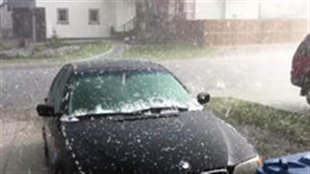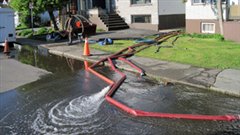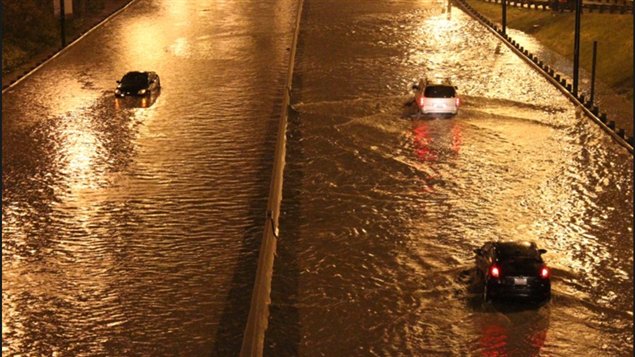“Protect Yourself from the Effects of Climate Change,” warns the Insurance Bureau of Canada on one of its web pages. “Are you disaster-ready?”
The frequency, severity and cost of extreme weather in Canada are increasing said Don Forgeron, president and CEO of the bureau. “Storms that used to happen once every 40 or 50 years are now happening once every 15 or 20 years,” he said. “And as a country we’ve just done nothing to prepare ourselves for this eventuality.”
Extreme weather blamed for increased insurance payouts
Insurance companies see themselves as the “canary in the coal mine” and warn that the increasing amount they have to pay in insurance claims is a harbinger of things to come. Yearly payouts for damage caused by flooding, fire, hail and wind storms increased from $100 million about a decade ago have gone up to $1 billion between 2009 and 2012.

Hailstorms last year alone caused $530 million in damage in the western province of Alberta, one of the regions hardest hit by extreme weather. It has also had several droughts and a study commissioned by the Insurance Bureau of Canada indicates there will be more of the same in future.
“We need to do more,” says insurance exec
“We need to do more… in terms of disaster risk management,” said Forgeron. The United Nations last week called on “private sector organizations and other stakeholders to submit case studies that show innovative activities of adaptation to climate change.”
Calgary, Alberta is one city that is taking steps to adapt to climate change, said Forgeron. “The single biggest thing municipalities can focus on is land use and where we allow people to build. It’s unfortunate, but time and time again we see damage in the same area because rivers flood every year,” noted Forgeron. “Those homes along the river are nice until that river is flowing through your living room.”
Cities need to upgrade their ageing infrastructure which, Forgeron said, was just not designed to cope with the increased precipitation they are seeing.

Property owners too need to do more to protect their assets, he said, things like installing back flow devises to prevent sewers from backing up into their basements. He notes that Canadians increasingly renovate their basements and keep expensive electronic devises and other valuable objects there.
People who live in fire prone areas can build buffers around their homes, he suggests.
Insurance premiums will increase
As the weather becomes more extreme and insurance payouts increase, companies will have to increase their premiums and adjust their deductibles. Some already have in Alberta. “That’s an unfortunate outcome but when you see claims costs increase six-fold over a three or four-year period, premium increases are inevitable,” said Forgeron.
He hopes that better preparation for extreme weather can mitigate some of those increases.







For reasons beyond our control, and for an undetermined period of time, our comment section is now closed. However, our social networks remain open to your contributions.